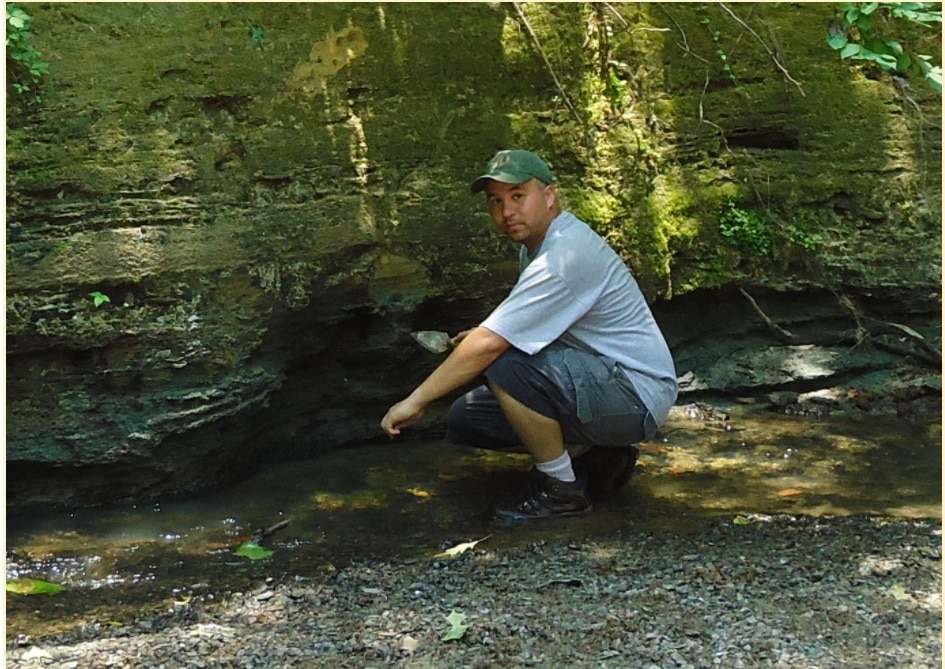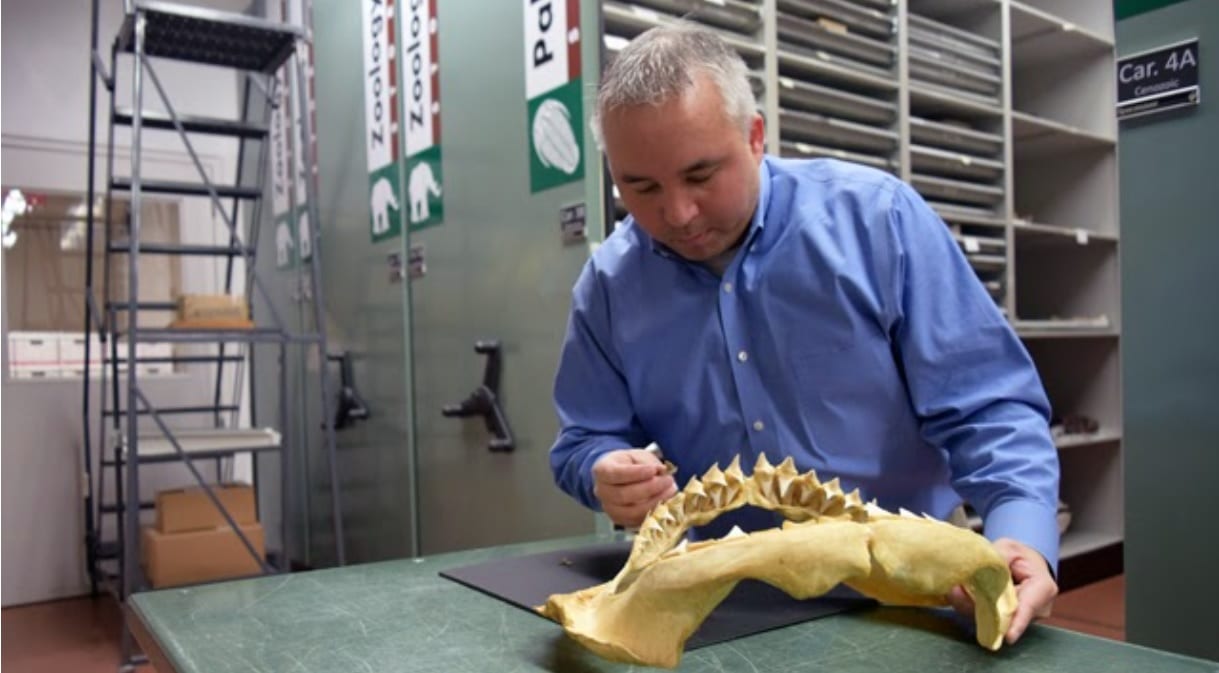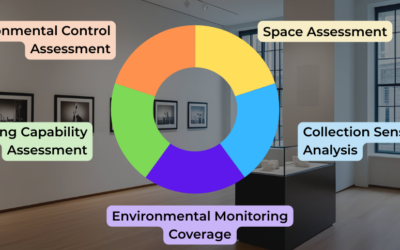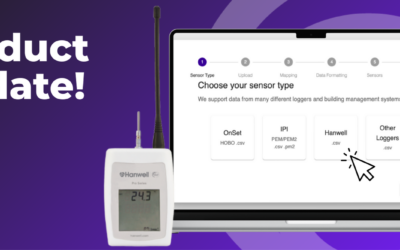
Jun Ebersole in the field.
At CONSERV we care about collections AND the people who care for collections. Today we have the second in our series of blogs exploring our favorite customers and the unique ways they’re using Conserv.
How many species has Jun Ebersole named or discovered? This vertebrate paleontologist-archaeologist from the McWane Science Center in Birmingham, Alabama doesn’t quite know. “A dozen, maybe a half a dozen,” he jokes when asked. What he knows for sure is how to preserve archaeological museum collections.
What brought this archaeologist to dinosaurs?
Hollywood’s most famous archaeologist gave us the motto, “This belongs in a museum!” But Jun’s path to his current position was winding. He grew up with dinosaurs—his family often visited the Field Museum and they spent camping trips hunting for fossils. He intended to spend his life doing fieldwork. After getting a degree in archaeology he traveled to East Africa to work at an early hominid field site, digging up clues to early human life. “If all had gone according to plan, I would have still been there.” But after political instability and violence rocked the region he returned stateside to work as an archaeologist at Fort Drum in upstate New York.
Jun spent a good chunk of time at Fort Drum excavating both historic and prehistoric sites to ensure new construction wouldn’t affect historic resources. When it was too cold to dig he worked in the archaeological collections lab and gained experience in a collections facility. He used this museum experience to get a job at McWane Science Center, where he has worked since 1999, with the exception of a few years in Kansas City working as an exhibitions programs director. Today, Jun is the Director of Collections for Natural History at McWane.
As a department of one inside a larger institution, he wears many hats. Jun is the point person for anything and everything involving McWane’s collections. Not only is he the primary researcher and exhibit developer for natural history projects, but he is also responsible for the day-to-day preservation work, including environmental monitoring and cleaning the objects. His collection is vast and diverse. It includes large collections of archaeological material, over 10,000 recent mussels and snails, a 1928 Model-T Ford, and the world’s largest collection of Alabama fossils, including Late Cretaceous period dinosaurs.
That environmental monitoring upgrade is just steps away!
For the past twenty years, Jun had been using the same kind of monitoring equipment—hygrothermographs, small sensors from Home Depot, and other competitors designed for non-museum applications. Before he even met Conserv staff, he had already tasked another staff member with researching environmental monitoring solutions. Because Jun’s work keeps him so busy, he had not kept up with sensor technology. He had a mental checklist of what he was looking for—accurate data, real-time results, and the ability to store data over time. He was frustrated that the technology he was looking at in 2020 was the same technology that he had been looking at in 1999.
Jun was particularly stymied by the lack of reliable and communicable data. He was familiar enough with his collection to be a human sensor to fluctuations in the environment, but he was looking for sensors that could be a bit more specific. As he said, “I’ve spent so much of my life in the past twenty years in that storage room—I can go in and tell you if it’s too hot, too cold, too humid, too dry.” But “feels cold” isn’t precise enough info to give to a facilities team, and Jun needed data that could talk in terms of percentages and degrees. Jun spends most of his days hanging out with fossils that predate human life by millions of years. But just because his best friends at work are dinosaurs, doesn’t mean that his collections equipment needs to be.
Just as Jun was trying to jury-rig various products together to create the solution he needed, he learned about Conserv through Nathan McMinn’s connections to the Alabama museum community. Conserv was already familiar with McWane, as the institution was across the street! In fact, Conserv was so close to McWane that they didn’t even install a wireless gateway at first because the range on the sensors was so reliable over a distance that the product could run off of Conserv’s gateway in-office. For Jun, the answer to his problem was literally around the corner.
Accurate data to influence decision-makers
Now that Jun receives accurate alerts from his updated environmental monitoring software, he knows more about the building than anyone—even the facilities staff. For Jun, alerts indicate that some mechanical error has occurred with the climate control systems, such as a stuck air duct. When the air conditioning malfunctions, Jun is the first to know. He’s used this feature to alert the Facilities staff in the middle of the night before the museum opened, allowing them to resolve the issue before visitors walk through the door.
After using Conserv, Jun was surprised by how inaccurate his old sensors were compared to his new sensors. “How many times had I tried to fix things and made them worse?” he wondered. He’s glad to now have a tool that helps rather than hinders his work.
Jun’s particularly excited that Conserv helps him show data over time. His previous analog system produced weekly charts, so it was difficult for him to see trends and patterns. Now his annual trends are automatically imported into a graphic that he can analyze and record observations. This gives him the chance to communicate more effectively to his administration and board.
Like Jun, many museum workers wear many hats, and worrying about environmental monitoring is something they don’t have time for!
With Conserv, Jun found “an elegant solution to a problem that every museum has.” Jun loves Conserv’s brand— from the user experience of the application to the look of the sensors. The wireless feature was especially helpful, because he had worried about the need to cut holes through walls and tape down cords for a hard-wired product.
What does Jun think is the most dino-mite thing about Conserv? For Jun, it’s that Conserv goes further than his basic needs. It not only combines the core monitoring products he was going to buy separately—temperature, relative humidity, and alerts—but also features he didn’t even know he needed, and now loves. These include the ability to track observations and a research page, among others.
Conserv empowers the entire museum community
For Jun, working with Conserv is more than just a vendor-client relationship. Jun sees Conserv as a community and a resource. He believes that Conserv can empower the field with information about their collection and resources to help interpret and act on the data, and bring professional-quality monitoring to any collection. Jun spent years being misled by faulty equipment. Now, the only archaic things in his collections facility are his fossils and not the tools he uses to care for them.
If you are interested in learning more about upgrading your environmental monitoring, check out our software features, which include real-time alarms, levels, reports and even integrated pest management capabilities!
If you have any questions about environmental monitoring, integrated pest management, or just want to talk about preventative conservation, please reach out to us! Don’t forget to check out our blog or join our community of collections care professionals where you can discuss hot topics, connect with other conservators or even take a course to get familiar with the Conserv platform.




